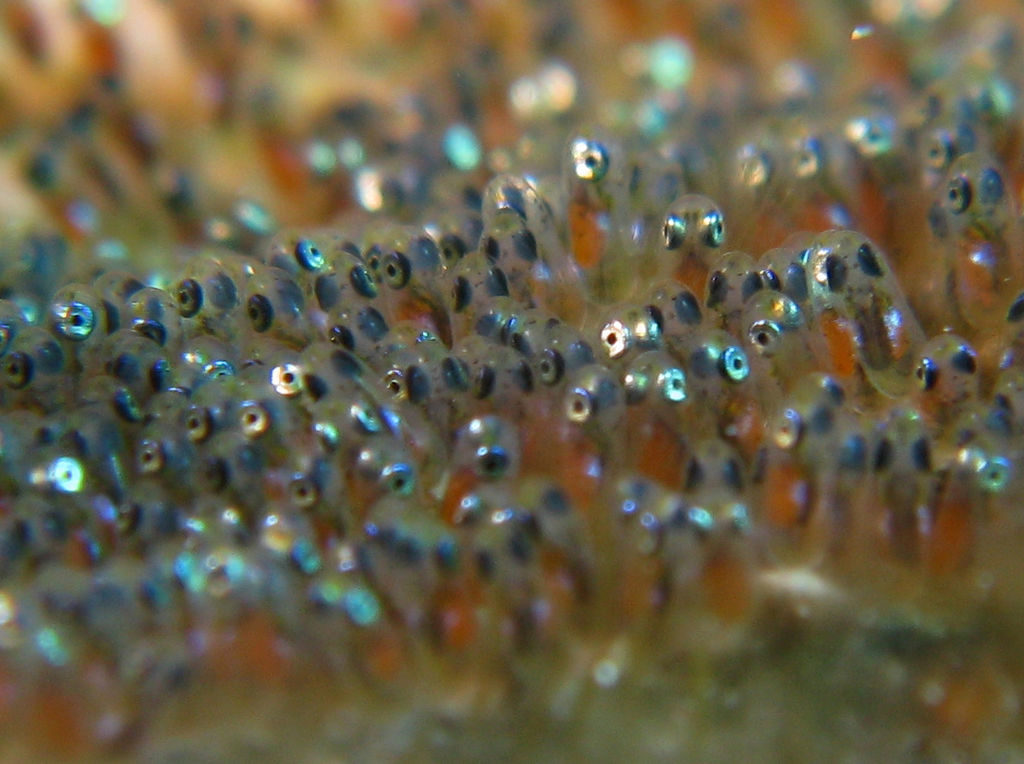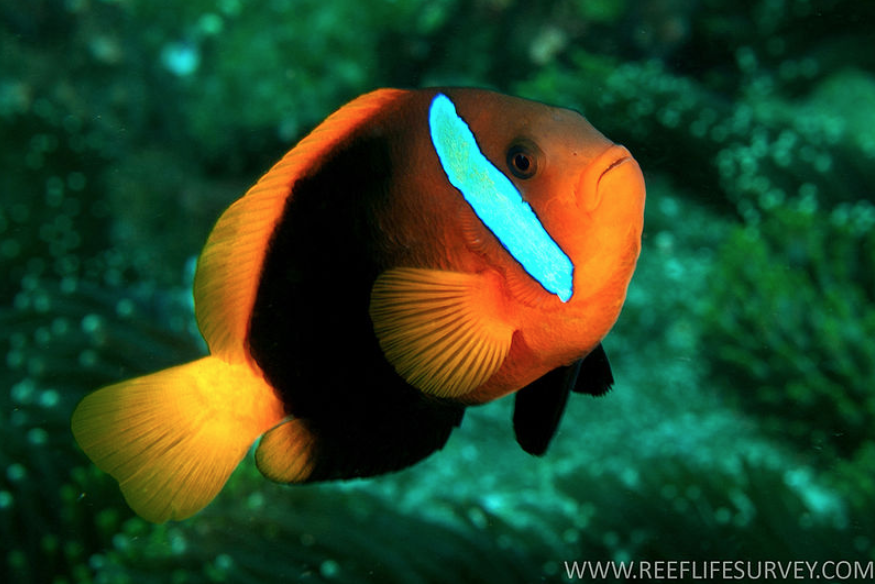It is well known among breeders that Clownfish undergo major physiological changes as they transition from pelagic larvae to reef-dwelling, anemone-dwelling adults, but researchers at the James Cook University in Australia took a deeper dive into exactly what happens during metamorphosis and made some amazing discoveries. Adam Downie and his colleagues studied the Cinnamon clown, Amphiprion melanopus, breeding them in their laboratory and then studying the major changes from hatching to day nine when they usually settle.
The first question to answer was how these tiny larvae navigate strong ocean currents, finding new reefs and new host anemones. It turned out that Cinnamon clowns become athletes in just over a week after hatching, increasing their swimming speed from three body lengths per second to ten body lengths per second by the time they settle.

Highest oxygen uptake of any fish
To fuel that swimming performance the researchers also recorded the highest oxygen uptake of any bony fish recorded to date, but then huge changes in gene activity, 2470 genes to be exact, allowing the larvae to change from high oxygen-consuming oceanic athletes to be able to cope with the hypoxic conditions that happen on a reef at night, when thousands of organisms around them stop producing oxygen, start using it all up, and respire.
The authors suggest that changes in gene activity allow the larvae to switch from hemoglobin that delivers large amounts of oxygen to tissues for swimming, to different subunits that help them cope with hypoxic conditions on the reef floor.
Downie told phys.org, “Anemonefishes are miniature athletes as larvae so they are able to swim against ocean currents and find a home coral reef to settle on. When they are close to finding a reef, they lower their oxygen uptake rates, and their hemoglobin changes to be able to tolerate the low oxygen levels that characterize their new coral reef homes at night.”
For more information see Downie AT, Lefevre S, Illing B, Harris J, Jarrold MD, McCormick MI, et al. (2023) Rapid physiological and transcriptomic changes associated with oxygen delivery in larval anemonefish suggest a role in adaptation to life on hypoxic coral reefs. PLoS Biol 21(5): e3002102. https://doi.org/10.1371/journal.pbio.3002102



